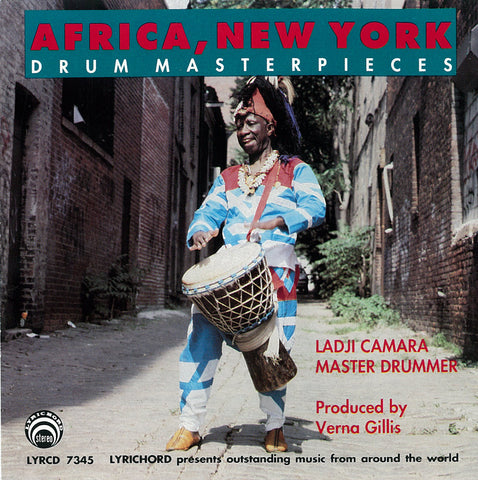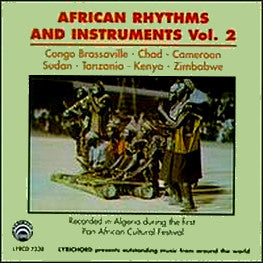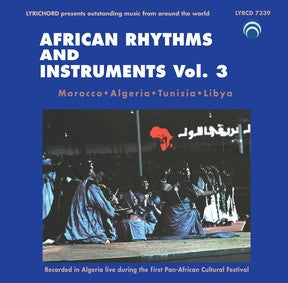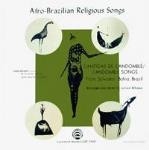
Ghana: Music of the Northern Tribes DOWNLOAD ONLY LYR-7321
Digital Download available from your favorite site including
Download free liner notes below (Mac users use Ctrl + click)
"One of many field recordings capturing the wealth of Africa's roots music, this Lyrichord compilation focuses on the tribes of northern Ghana, a region whose arid landscape contrasts sharply with the country's more fertile coastal regions. Like high-profile releases on the Nonesuch label, this impressive collection benefits from clean sound and a varied program."All Music Guide
This music is from the people in the dry savannah north of the Brong Ahafo. Features some of the most unique and diverse instrumentation form and vocal technique in Africa. This is a music of the people, speaking of everything from personal life to social comment. A truly personal view of the tribes of northern Ghana. Recorded in Ghana by Verna Gillis.
Tracks:
1. Mamprusi performed by Yamgbalga - 6:50
2. Grunshi - 7:12
3. Frafra performed by A.B. Lunnaa - 5:23
4. Kusasi performed by Akurugu - 4:55
5. Dagarti performed by Dagaabas Bawa - 5:25
6. Dagarti performed by Dagarti Dancing Group - 6:10
7. Kasena performed by Kasena Nankans - 2:30
8. Kasena - 2:43
9. Kasena performed by Kasena Nankans - 4:19
Additional Information
Cilck here to see complete All Music Guide review and listing.
About the Tracks:
Mamprusi (Muslim) Mr. Yamgbalga - leader. Leader and chorus, accompanied by several donnos (hourglass-shaped pressure drums). Recorded in Tamale. In this ensemble the leader begins with a solo section in free rhythm. Then he and the chorus alternate - the former producing both musical and textual variations and the latter responding with an essentially unchanging part. The donnos, played by the singers, change in pitch as they are squeezed. The drum is held under the left arm and is stick-beaten. The pitches and rhythms thus produced are based on verbal texts.
Grunshi Mr. Achigive Azupio - leader. Two pairs of singers accompanied by the guluzoro and gulusago lace drums. Recorded in the Chiana District, west of Bolgatanga. The Grunshi of the extreme north actually comprise several distinct subgroups such as the Kasena and Frafra. Like many other stateless societies of the area, they have until recently been largely unaffected either by the Muslim states or by Europeans. The vocal style heard here in which two pairs of singers alternate in the performing of parallel lines, certainly owes nothing to Muslim or European sources. The music here is praise singing. Such songs are created by musical specialists (lem pulu: composers) who are highly regarded for their art, especially in regard to the composing of song texts. The lem pulu usually works and performs with a certain group (normally three men plus himself) to whom he teaches the songs. This music is primarily for listening, and its texts may deal with a wide range of subject matter - from the composer's personal life to biting social comment.
Frafra (Christian) Mr. A.B. Lunnaa - leader. Leader and chorus, accompanied by a siyari (calabash rattle). Recorded in Bolgatanga. May musical occasions of people in the north coincide with the harvesting of crop, usually in October or November after the rainy season has ended. This Frafra example from the extreme north is a song of thanks for a good harvest. The siuari is played by throwing it rapidly from one hand to the other.
Kusasi (Muslim) Mr. Akurugu - Singer accompanying himself in a gonje (bowed lute). Recorded in Bolgatanga. The Kusasi live in the extreme northeast of Ghana. Among them, as well as the Mamprusi, Dagomba and Gonja to the south, the institution of praise singer is found. When such a singer performs as a soloist he very commonly accompanies himself on an instrument such as the gonje. This bowed lute is found among many societies throughout the western Sudan, particularly where Islam has had some influence.
Dagarti (Catholic) Group - Dagaabas Bawa; Leader - Michael Bazoroviireh. Xylophone (guil)solo., Recorded in Tamale.
Dagarti Guil, wile (flute) ganga (drum) and male singers, Dagarti Dancing Group; leader - James Kulu. Recorded in Kumasi, district of Ayeduase. The Dagarti live in the extreme northwest of Ghana and extend into Upper Voita as well. They belong to the group of people often called LoDagaa, which includes the Lobi, Birifor and several other subgroups as well. All of these people traditionally use the xylophone for funerals, initiation ceremonies and recreational dancing.
The single Dagarti xylophone heard on track 1, called Dagaa gyil or simply gyil, is approximately five feet long and has seventeen keys, each with a corresponding gourd resonator. During a funeral there would normally be two gyil, one played in the style heard here and the other providing a series of supporting patterns.
A number of Dagarti, like other people throughout Ghana, have moved from their traditional area to the large cities in order to seek temporary or permanent employment. Thus the ensemble heard on band 2 was recorded in Kumasi, the Ashanti regional capital.
This example features a gyil upon which one person plays a melody while another plays rhythmic patterns on the largest key. A ganga - a cylindrical double headed drum - may also be heard, as well as a notched flute called wile. A group of male singers reproduces some of the melodic patterns of the gyil.
Kasena (Christian)
Group - Kasena Nankans. Two singers accompanying themselves on two zing (calabash halves). Recorded in Tamale. Refer to notes on Side 1 and 2.
Ensemble of weii (notched flutes), gulu (cylindrical drums) and gungonga (pressure drums). Music for the Nagila dance. Recorded in Navrongo. Gulu are two-headed cylindrical drums played with two curved sticks or a stick and a hand. The hourglass drum is called gungonga. A complete ensemble includes six or seven flutes. The highest pitch one (wubala) plays the most important part of the melody and may improvise on it. The flutes in the middle register play one or two notes in hocket with the wubala, as does also a lower pitched flute. The performance of such music is often related to chiefs.
Singer accompanying himself on a kono (strummed lute). Group - Kasena Nankans. Recorded in Tamale. The kono is often used to accompany praise singing, but in this example the intention seems to be to imitate flute music. The tuning of the kono differs from one instrument to another.
We Also Recommend








